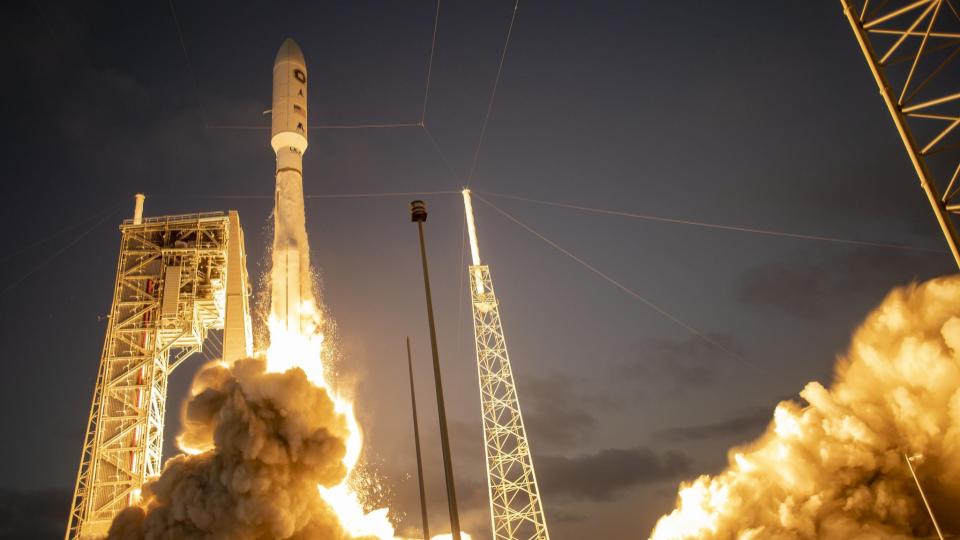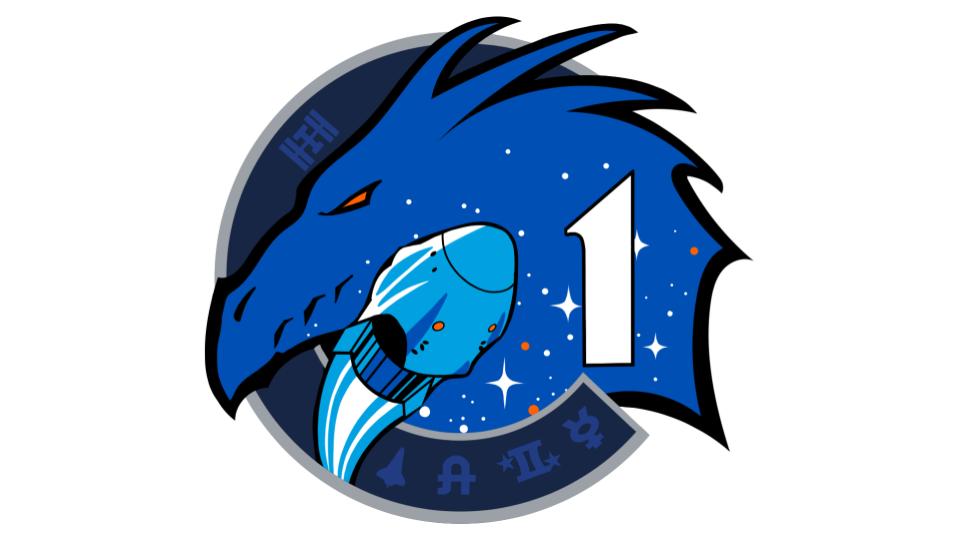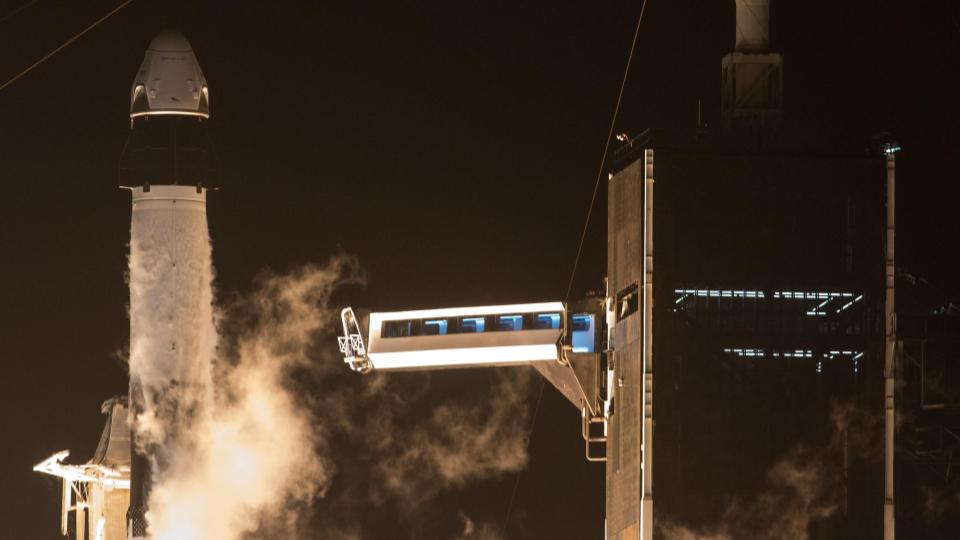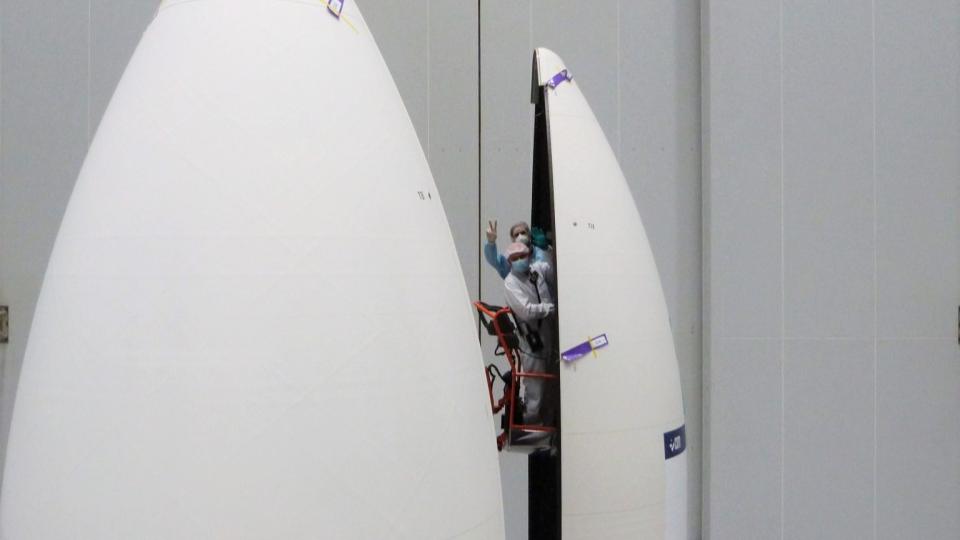Media
Transcript
Hello, and welcome to the Daily Space for today Wednesday, November 18, 2020. I am your host Annie Wilson. Most weekdays we’re here putting science in your brain.
Usually, Wednesdays are for Rocket Roundup, so let’s get to it, shall we?
First up, China launched a Long March 3B on Thursday, November 12 at 15:54 UTC carrying the Tiantong 2 mission from Xichang Satellite Launch Center in southwestern China.

Once in orbit and connected to Tiantong 01, the two satellites will provide stable satellite phone coverage in all weather conditions for China and surrounding areas. The independently designed and built satphone system will be operated by China Telecom.
A third satellite is expected to join the constellation in the coming years.
On Friday, November 13th at 22:32 UTC, a much-delayed United Launch Alliance Atlas V rocket took off from SLC-41 at Cape Canaveral Air Force Station carrying a classified National Reconnaissance Office payload known as USA-310. The launch itself was called NROL-101.

Originally scheduled for November 4th, it ended up being pushed 3 times, including once for Hurricane Eta, to its actual launch day of the 13th. This launch also marked the debut of new GEM-63 solid rocket boosters made by Northrop Grumman, a change from the Aerojet Rocketdyne boosters.
The circular mission patch features a golden Earth in the center, with the starry background divided into quarters. Each quarter features a star — I have no idea what the stars represent, but usually they represent satellites. A golden ring borders the batch, bearing the mission name as well as an Elvish script that translates to “Goodness Persists.” The NRO had tweeted a picture of the mission patch, explaining that it “pays tribute to the Lord of the Rings stories”.
Not much else is known about this payload or mission because it’s suuuuuuper secret.
Next up, on November 16th at 00:27 UTC, a SpaceX Crew Dragon named Resilience took off from LC 39A at NASA’s Kennedy Space Center.

Before we get into the details, check out this mission patch. A fierce-looking blue dragon is featured prominently, with a depiction of the Crew Dragon and the number “one” among a scattering of stars superimposed on the dragon. “The spacecraft is flying from the bottom left toward the top right, representing ascent and insertion into orbital flight.”
A keen eye will notice that the border is not a circle, but the letter “C”. That, together with the number one, signifies the name of the launch: Crew-1. In the starfield, there appear to be four larger stars — possibly one for each passenger. In the border are the outlines of the ISS and the Shuttle, as well as the symbols for Apollo, Gemini, and Mercury. Conspicuously absent from this patch are the astronauts’ names. According to NASA, “[t]here are no individual names or flags on the border because the patch honors not just the crew members on board, but all of the NASA and SpaceX employees who worked together. This patch honors their vision, service and support.”
Carrying four astronauts to orbit, Crew-1 had a near-flawless launch. The only glitch involved having to re-open the hatch after routine tests caught a slight pressure drop during the countdown. The crew found a tiny piece of debris on one of the seals that was causing a slight leak. They cleaned it up, resealed the hatch, and had a successful test. The ground crew did all of this in just a few minutes, allowing the launch to take place on schedule.

The crew consisted of:
Michael Hopkins (NASA), Spacecraft Commander: second space flight
Victor Glover (NASA), Pilot: first space flight
Shannon Walker (NASA), Mission Specialist 2: second space flight
Soichi Noguchi (JAXA), Mission Specialist 1: third space flight and the first foreign astronaut to fly in a Crew Dragon
There are now seven humans on the ISS, but there are only six sleeping quarters. Until additional equipment is sent up on a cargo flight, Commander Michael Hopkins is going to sleep in the Crew Dragon.
And of course, everyone wants to know what the zero-gravity indicator was on this flight. During the Dragon test launches, plushies were used, including the Little Earth Celestial Buddy and a Ty dinosaur named Tremor. For Crew-1, the tradition was followed, and in a nod to the popularity, and frankly, adorableness, of Baby Yoda, a plush of The Child from The Mandalorian floated on a tether for much of the trip. So far, there have been no signs of the Razor Crest in pursuit.
The trip to the International Space Station took about 27 hours, with docking taking place on November 17th. The docking was essentially uneventful, with one tiny hiccup where shadows obscured the view of the space station. A short hold was implemented while the capsule was about 20 meters from the docking adapter while the onboard crew waited for what amounts to sunset. Once the shadows ceased to be a problem, Resilience made contact with the station. “Soft capture” occurred at 04:01 UTC, and the docking itself was complete at approximately 04:15 UTC.
The Dragon and its crew are scheduled to spend about 180 days at the ISS, returning to Earth sometime in May 2021.
And our last launch of the week was an Arianespace Vega rocket on Tuesday, November 17 at 1:52 UTC.

This was the second launch after the failure of Vega flight VV15 in July 2019. That launch failed due to a now-corrected structural problem with the second stage. This week’s failure of Vega flight VV17 happened when the AVUM — the very last stage of the rocket that is used to put the satellites in orbit — tumbled out of control. Early analysis by Arianespace suggests that cables were installed incorrectly meaning that signals were sent to the wrong thrust vector control actuators. Both payloads, a Spanish Earth observation satellite and a French atmospheric science satellite, were lost.
To wrap things up, here’s a running tally of a few spaceflight statistics for the current year:
Toilets currently in space: 5 — 2 installed on ISS, 1 on the Crew Dragon, 1 on the Soyuz, 1 not yet installed
Toilets burned up: 3
Total satellites humans put into orbit: 1081 (includes those launched from other in-orbit craft, such as the ISS)
Total satellites from launches: 1050
Total Starlinks (this year): 773
Total 2020 orbital launch attempts: 94 (including 10 failures)
I keep track of orbital launches by where they launched from, also known as spaceport. Here’s that breakdown:

China: 34
USA: 31
Kazakhstan: 7
Russia: 5
French Guiana: 5
New Zealand: 5
Japan: 3
Iran: 2
India: 1
Israel: 1
Your random space fact for the week is that there is a stained glass window in the National Cathedral in Washington D.C., which contains a piece of the Moon collected during the Apollo 11 mission. The lunar rock was donated by the Apollo 11 astronauts on the fifth anniversary of the first Moon landing.
Learn More
Changsan B rocket successfully launched Tiantong-1 02
- CASC press release (Chinese)
- CAST press release (Chinese)
- CGTN news article
- Tiantong-1 info page (Gunter’s Space Page)
NRO launches national security payload from Cape Canaveral
- NRO press release
- Los Angeles Air Force Base press release
- USA 310 info page (Gunter’s Space Page)
NASA’s SpaceX Crew-1 Astronauts Arrive at Space Station
Vega flight VV17 failure: Arianespace and ESA appoint an independent Inquiry Commission
Credits
Host: Annie Wilson
Writers: Gordon Dewis, Beth Johnson, Ally Pelphrey, and Annie Wilson
Audio and Video Editing: Ally Pelphrey
Content Editing by Beth Johnson
Executive Producer: Pamela Gay
Intro and Outro music by Kevin MacLeod, https://incompetech.com/music/


 We record most shows live, on Twitch. Follow us today to get alerts when we go live.
We record most shows live, on Twitch. Follow us today to get alerts when we go live.